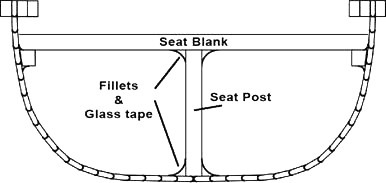Relief and Filler Strips
“THE COST OF THE CURVE”
Those who know me well have heard me say at one time or another that “nothing in life is free”. This is particularly true in some of the design decisions of boats. At the risk of getting myself ostracized from the boating community, I would rather be up front with a prospective builder and tell them the positives and negatives of a design even at the risk of loosing that customer. You will, at a minimum, give up a good number of weekends to build your boat, and depending on the boat you may spend hundreds of hours building. Although I stick by my philosophy that the building of the boat is an important and enjoyable part of the journey, you as the builder have every right to know where that journey will take you.
Generally speaking, hulls that are full right to...





